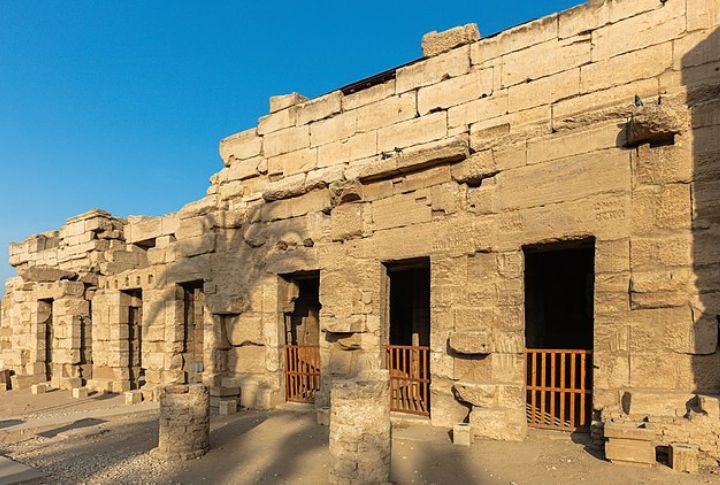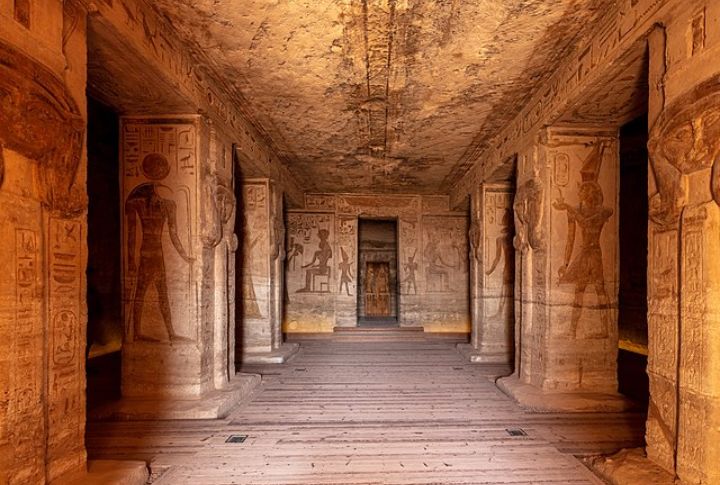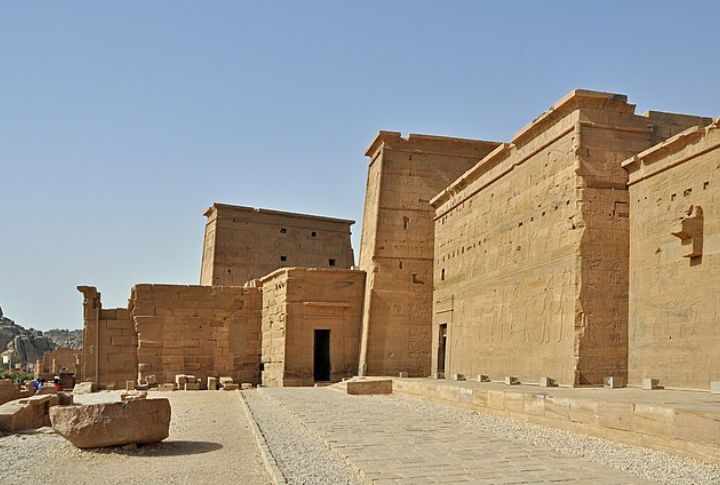
Egypt is the kind of place that feels straight out of a storybook. Towering pyramids, ancient temples covered in mysterious hieroglyphs, the Valley of the Kings, standing in awe beneath the Great Sphinx, and bustling bazaars that feel like they haven’t changed in centuries. It’s where history and culture collide.
The Great Sphinx

The Great Sphinx of Giza, sculpted from a single piece of limestone, displays a lion’s body and a pharaoh’s visage. Many believe it represents Khafre (the fourth king of the Fourth Dynasty). Towering over the Giza Plateau for millennia, it remains an enigma. This ancient sentinel has been weathered by time, but it’s still imposing in stature.
Luxor Temple

Luxor Temple was a focal point for religious and political events located on the east bank of the Nile. The Avenue of Sphinxes links the Luxor Temple to Karnak, where the annual Opet Festival occurs. This grand celebration symbolized the renewal of kingship, which reinforced the ruler’s divine authority. Its grand colonnades and sanctuaries reflect the grandeur of Egypt’s New Kingdom era.
Karnak Temple Complex

Spanning over 200 acres, the Karnak Temple Complex is a vast open-air museum. Dedicated primarily to the Theban triad of Amun, Mut, and Khonsu, its construction spanned several dynasties. With its forest of towering columns, the Great Hypostyle Hall is proof of the architectural ambition of ancient Egypt.
Valley Of The Kings

Located in the dry mountains west of Luxor, the Valley of the Kings is the burial place for pharaohs and nobles from the New Kingdom. This burial site has tombs embellished with detailed carvings and paintings that depict the passage to the afterlife. Notably, the tomb of Tutankhamun (filled with treasures) was also discovered here.
The Great Pyramid Of Giza

The Great Pyramid of Giza has been towering for more than 4,500 years, representing one of history’s most impressive architectural achievements. Constructed during Egypt’s Fourth Dynasty, this monumental structure showcases the ingenuity and precision of ancient builders. Its massive limestone blocks, meticulously arranged, continue to inspire awe and admiration.
Abu Simbel Temples

Carved into a mountainside, the Abu Simbel Temples were commissioned by Pharaoh Ramesses II. The enormous temple features four colossal statues of the pharaoh, each standing approximately 20 meters tall. To prevent submersion from the rising waters of Lake Nasser, these temples were relocated in the 1960s.
Siwa Oasis

Located near the Libyan border, Siwa Oasis is one of Egypt’s most isolated settlements. Recognized for its lush palm groves and the ancient Temple of the Oracle of Amun, it presents a unique mix of pristine beauty and historical significance. Alexander the Great is said to have visited this oracle to confirm his divine lineage.
White Desert

In the Farafra Depression lies the White Desert, known for its surreal rock formations shaped by wind and sand. These chalky monoliths, resembling giant mushrooms or abstract sculptures, create an environment that feels otherworldly. Camping under the stars in this desert offers an unforgettable experience. And it shows Egypt’s natural wonders beyond its ancient monuments.
Mount Sinai

Rising to 2,285 meters, Mount Sinai is traditionally regarded as the biblical mountain where Moses received the Ten Commandments. Pilgrims and hikers often ascend paths to witness the sunrise from its summit. At its base stands St. Catherine’s Monastery, one of the world’s oldest working Christian monasteries, which houses a rich collection of religious manuscripts and icons.
Temple Of Philae

Have you ever seen a temple so cherished that an entire island became its new home? The Temple of Philae, dedicated to the goddess Isis, once faced the threat of rising waters. To protect its breathtaking carvings and towering columns, it was meticulously relocated to Agilkia Island. This move preserved its spiritual legacy, which would endure for generations.

